The Leather Dilemma
Leather has been a part of fashion since its very inception. The vintage leather goods at the coolest resale platforms are proof of that. But as we move away from the era of what can be called blind consumerism, it’s hard to look at that brand new leather ‘IT bag’ and not think of the animal life that went behind it.
So while I was already on the lookout for the best alternative to the very footprint-heavy leather, watching Waterbear’s documentary ‘Slay’ on the leather industry and its environmental impact only accelerated my quest to find the perfect sustainable option for leather accessories. The documentary gave a visual insight into what the leather-making processes really lead to, for human life and the animals and not just the surrounding natural ecosystem. But the biggest thing it highlighted was how close to home the leather industry is making a negative impact. As it turns out, the Indian leather industry accounts for 13 per cent of the global production according to Invest India. Furthermore, women workers make up a 33 per cent chunk of the leather workforce, one that faces health risks thanks to exposure to toxic chemicals like chromium sulphate for tanning.
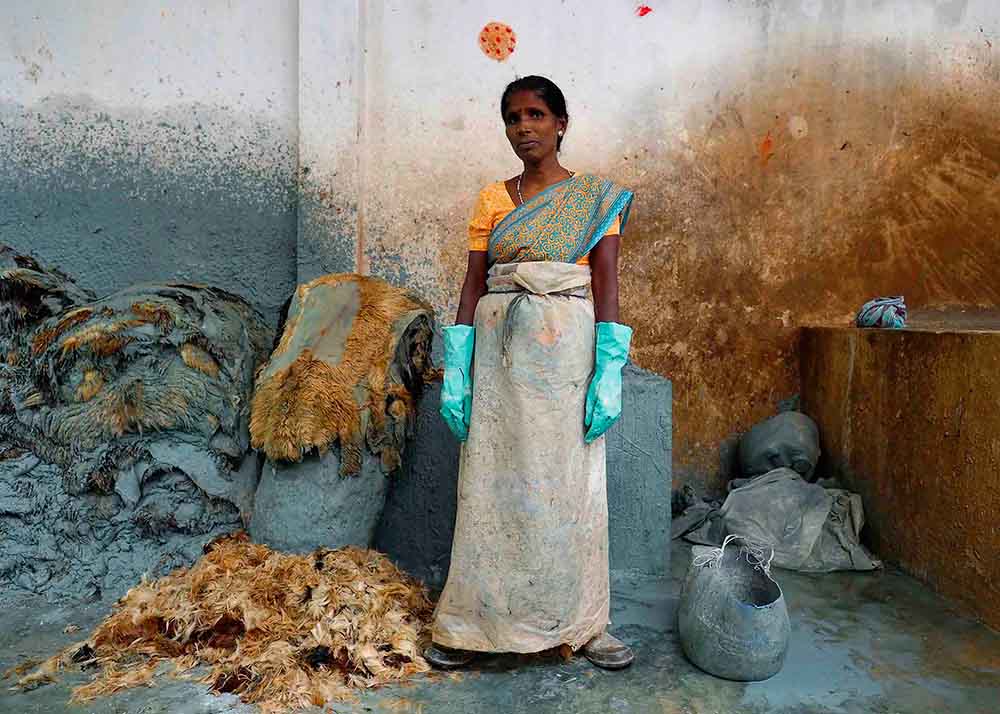
Image Source: Undark.org
So what really is the best way out? The perfect and sustainable replacement for conventional leather? One that is not cruel, environmentally degrading or endangering to human life. We’ve done a deep dive into all the alternatives and here’s everything we know!
Is Leather A Complete ‘No’?
Before getting to know leather’s animal-free alternatives, which have gained popularity already, it’s hard to ignore leather’s most important quality: longevity. Take care of it well and any leather product will give you many good years, if not decades. This already means you end up buying less, not to mention fashion and how cyclical it is- which means your leather accessory will always be fashionably relevant. But this doesn’t always outweigh the cons we know about leather- chemical tanning processes, effects on human life and natural resources in the vicinity.
We spoke to homegrown leather show brand Oceedee’s co-founder Neha Kumthekar to find out how these can be rectified and chanced upon some insights. Apart from ensuring safe and fair working conditions, the brand also uses ‘cruelty-free’ and ‘ethically-sourced’ leather. “When we say cruelty-free it means that leather is a by-product of the meat industry. No animal is raised or slaughtered for the hides specifically. At Oceedee it is crucial to us knowing that our raw materials are procured from organisations we can trust and their values are in line with Oceedee’s values. We source all our leather from Tata International, which is a leading exporter of finished leather and leather products in India. Based out of Dewas, its tanneries are authenticated by LWG (Leather Working Group) Gold Rating. This means their tanneries are rated on multiple parameters such as their energy and water use, emissions and chemical inputs, the welfare of their staff as well as having a clear supply that traces the source of the hides. We do understand that there is still a long way to go and it’s not a perfect solution but the LWG and certified tanneries offer a step in the right direction,” says Kumthekar.
Furthermore, to reduce wastage, creative techniques like nesting and optimising the production cycles with the right experience are used by the brand. “We are now also more actively taking steps to reduce our waste further through collaborations and design innovation like the one with Doodlage or soon-to-be-launched collaboration with Paiwand Studios,” adds Kumthekar.
Find out more about the Oceedee X Doodlage Collection: Click here
About Oceedee’s all-around approach to conscious production, Kumthekar says, “With the increasing narrative around sustainability, I strongly feel that the spectrum has to be much wider. We believe in a 360-degree approach that takes a more holistic account of the evolution of the people, the planet, and the product. As a young business, this is definitely a work in progress, and we believe in being transparent. But we are taking small steps towards being more sustainable by collaborating with industry experts and making a difference one day at a time.”
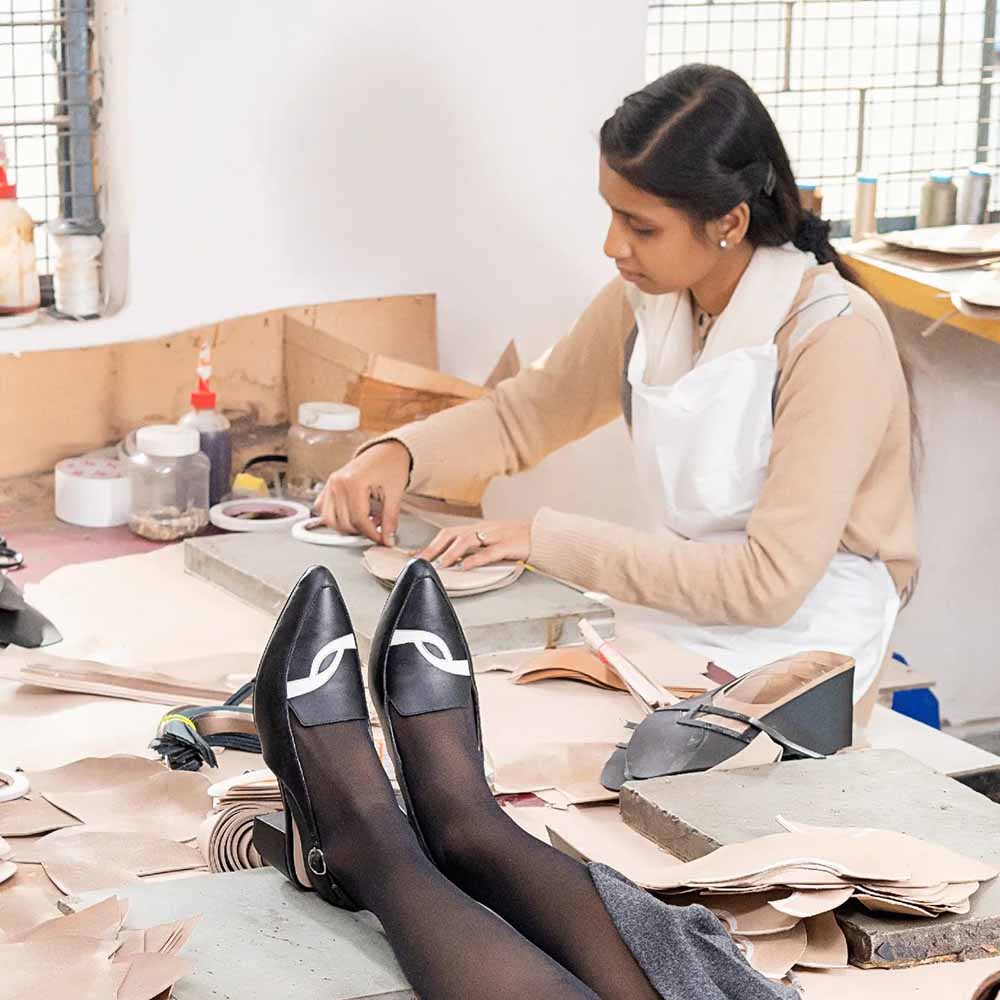
Image Source: Instagram/oceedeeshoes
Animal-Free = 100 Per Cent Sustainable?
You’d think animal-free leather would help eliminate most of the environmental cost, but as it turns out, it’s far from that. Here’s why!
Most ‘faux’ or ‘vegan’ leathers out there are often made of Polyurethane (PU) which is made from plastic- making it non-biodegradable and low in longevity. Most PU leather products tend to flake easily- often within a few years of use and are more difficult than leather to repair. "Several brands are jumping on the bandwagon of vegan leather without really going into the depths of it. I do agree that animal welfare is critical however when talking about material sustainability every aspect of the process needs to be evaluated,” points out Kumthekar.
A slightly better alternative would be the recently popular plant-based leathers like Desserto (made from cactus), Piñatex (made from waste pineapple leaf fibers), Cork, Mirum (made from plants and minerals) and more. The downside? Some of these still include a small plastic component which makes their biodegradability questionable. Conscious accessory brand Beej’s founder Arundhati breaks it down for us, “Piñatex is coated with resin which gives the product the look, feel and durability and also makes it water-resistant. So that is just the top layer and 90 per cent is biodegradable. But there are also other plan-based leathers like mango leather or apple leather where they essentially take the fruit pulp and binds it with a plastic-based polymer to put the material together.” explains Arundhati. In the case of the latter, biodegradability is less of an option as the two materials are blended together and are difficult to separate.
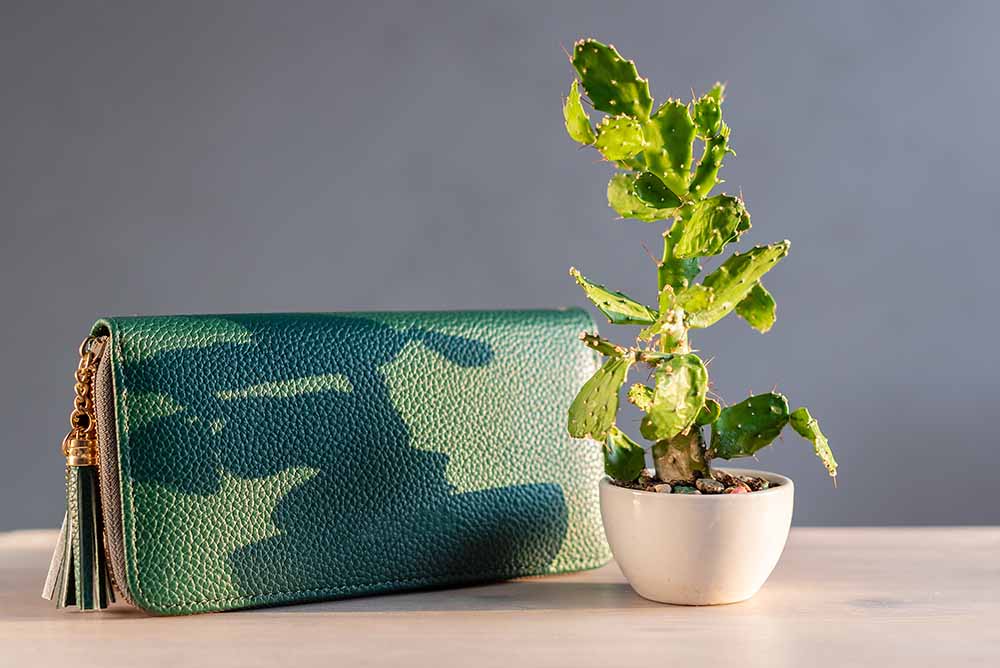
Image used for representational purposes only.
Mirum, as the entrepreneur points out, is the first plastic-free plan-based leather. Beej offers a sleek and structured black and white shoulder bag made with Mirum. Luxury Indian designer Anita Dongre also recently launched a collection of vegan bags and belts made from Mirum. The accessories feature a black leather-like finish and gold hardware in unique designs, making styling vegan fashion more accessible to the Indian consumer. Indian brand Phool has also created its very own material.
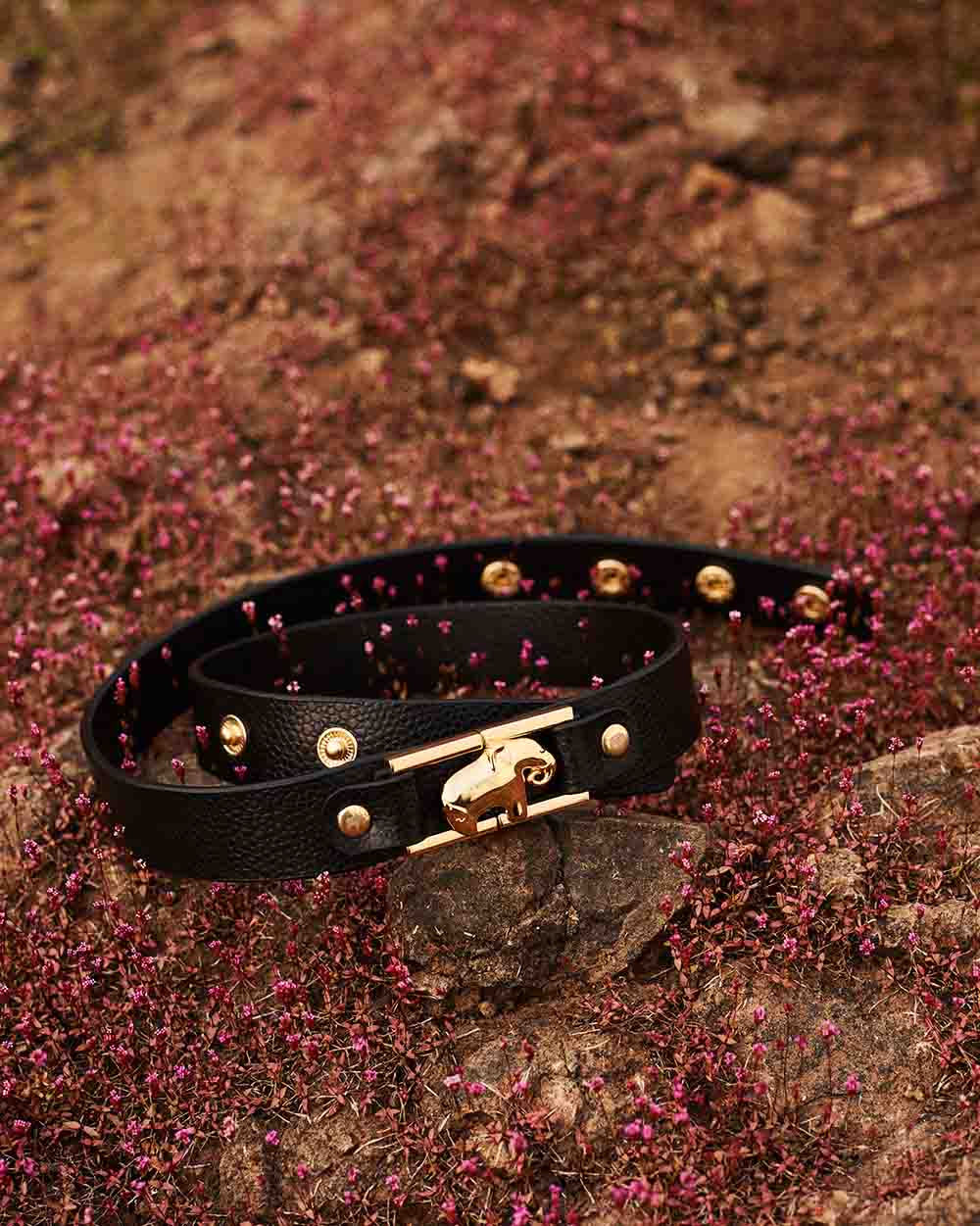
Image Source: Anita Dongre
In India, only a handful of brands essentially offer a range of guilt-free leather accessory options. Given that the country is a major hub for leather productions and exports, this seems like a ‘miss’ in terms of fashion sustainability. What’s most important is to recognise the authentic alternatives with a lower footprint and not trust the ‘vegan’ tag now being offered by many in the fashion space. “Most brands that do not want to say that it’s synthetic would use a term like that. “Most brands that are using plant-based leather will put it out there,” suggests Arundhati. Cork, according to her, is one of the most ideal options to use if you’re newly transitioning to animal-free leather products. “If someone wants to opt for something that is not just vegan but also sustainable, I would say cork is a great alternative. It’s affordable, it’s very durable and high on quality, water resistant,” she adds.
Apart from the durability of cork, which has been in use for accessories for a long time now, it’s rather tough to set in stone the number of years a particular product will last you. Most plant-based alternatives are four to five years old since inception which makes it tricky to compare durability with animal leather which is known for its longevity.
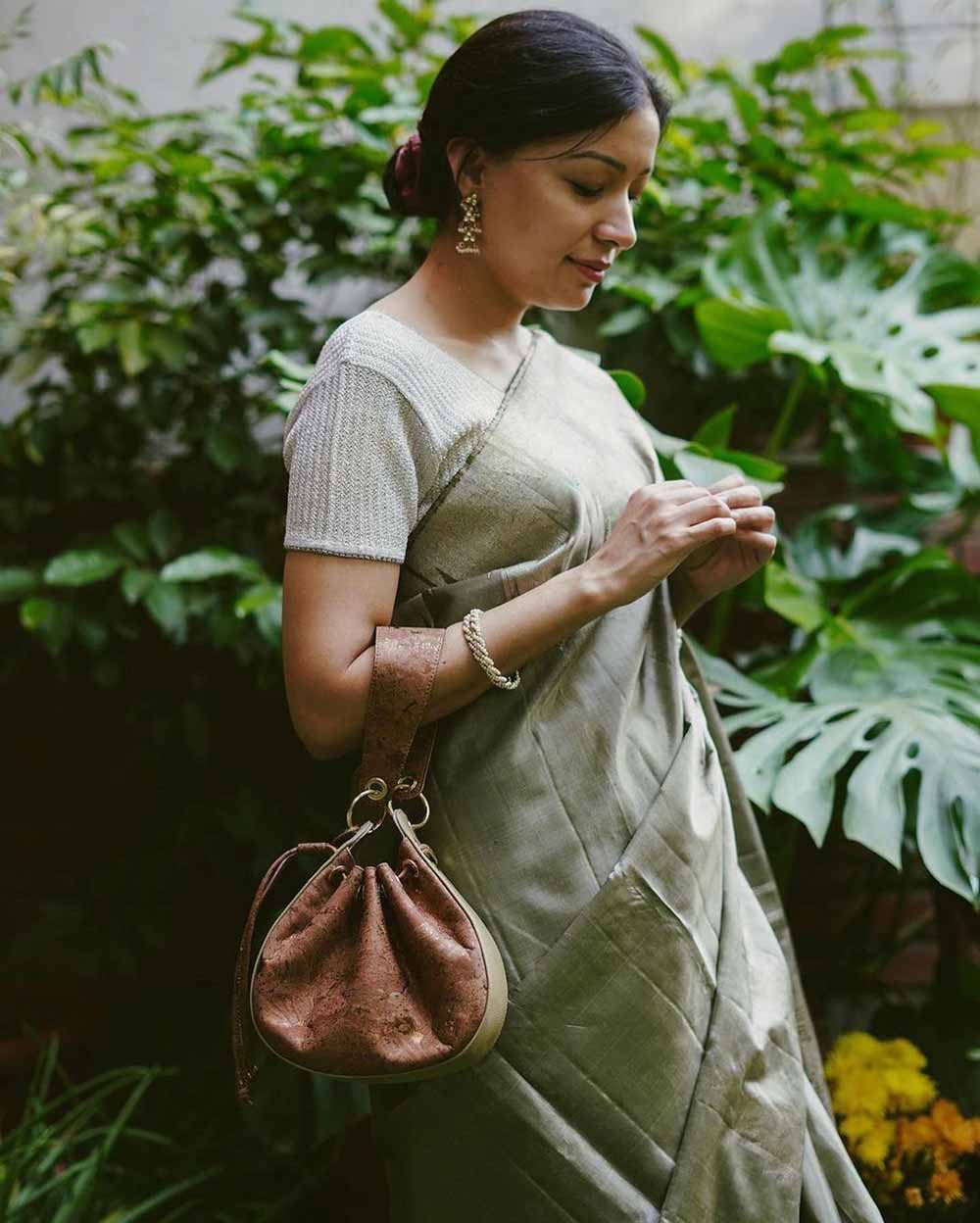
Image Source: Instagram/studiobeej
The bottom line, truly, depends on what your priority, preference and personal style are. If you want to avoid animal products and be sustainable with your pick, plant-based leather could be your answer. On the flip side, if you are looking for a classic piece that you’d like to have forever and are comfortable with using cruelty-free animal products, brands like Oceedee can give you a good range to pick from.
In either case, it’s really more important to ask the right questions about the origin of your products before buying something just for style or a trend.